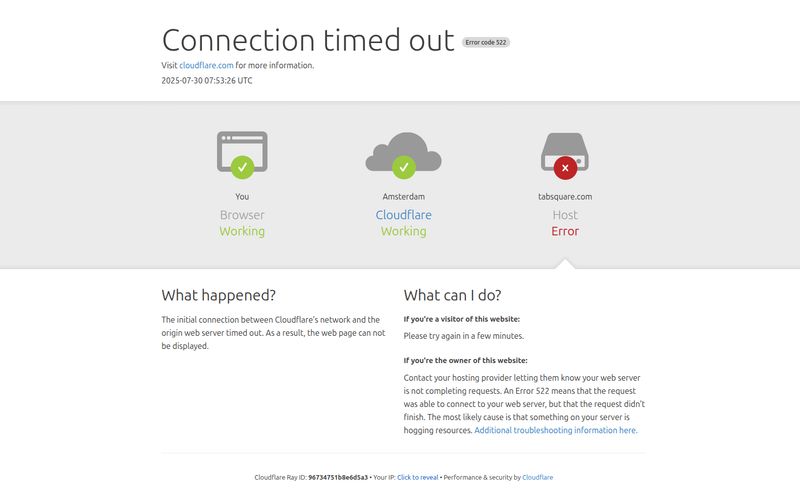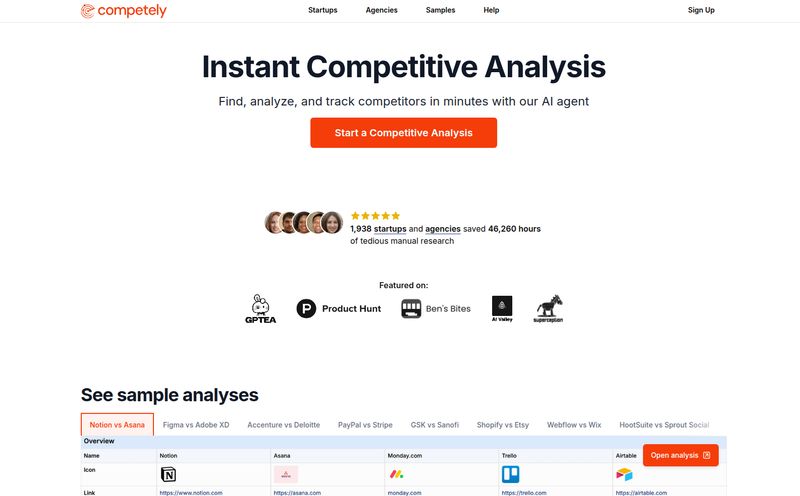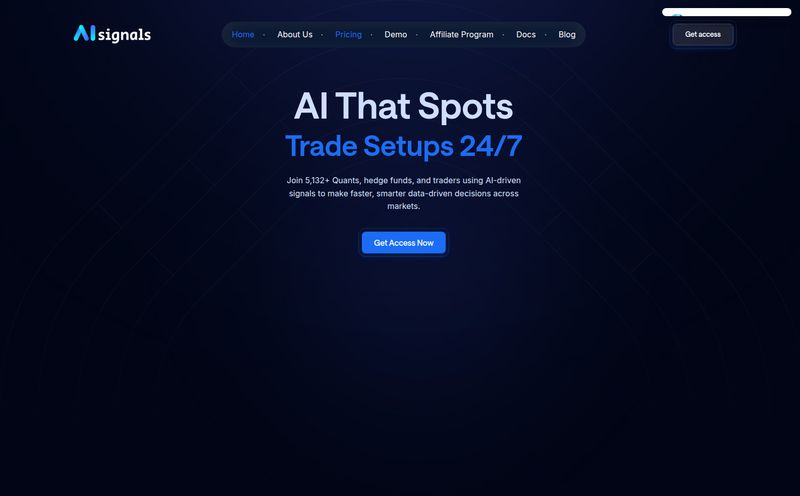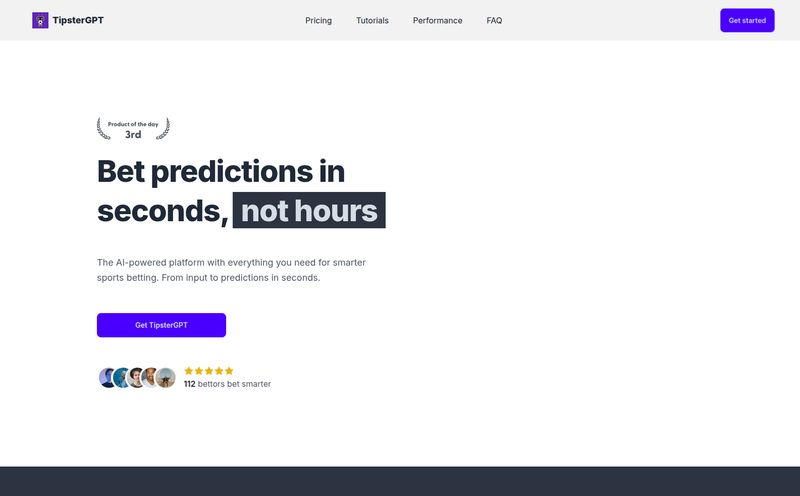If you've ever managed a restaurant, you know the weekly scheduling process is a special kind of nightmare. It's like trying to solve a Rubik's Cube while herding cats... in the middle of a dinner rush. You're juggling shift requests, trying to predict Friday's crowd based on last year's sales, and praying you don't overstaff on a Tuesday that turns out to be dead quiet. The whole thing is fueled by gut feelings, spreadsheets from the dawn of time, and way too much caffeine.
For years, this has just been 'the cost of doing business' in an industry with notoriously thin profit margins. But what if it didn't have to be? I've been keeping my eye on the rise of AI in operations, and I recently stumbled across a platform that made me sit up and pay attention: Lineup.ai. It claims to use artificial intelligence to take the guesswork out of demand forecasting and scheduling. A bold claim. So, I decided to take a closer look.
So What Exactly Is Lineup.ai?
First off, don't mistake this for just another digital scheduling app. There are plenty of those. Lineup.ai is fundamentally a forecasting engine. Think of it less as a digital calendar and more as a financial GPS for your daily operations. It plugs into your existing systems and analyzes a ton of data to tell you not just how many people you need on the floor, but when you need them, with a level of accuracy that frankly, a human brain just can't match.
It’s designed to answer that age-old restaurant question: "How busy are we actually going to be?" By answering that with data instead of a hunch, everything else—from labor costs to inventory—starts to fall into place.
The AI Magic Under the Hood
This is where it gets interesting. The term 'AI-powered' gets thrown around a lot these days, often as just a marketing buzzword. But here, it seems to be the core of the product. The platform doesn't just look at what you sold last Wednesday; its approach is much more sophisticated.
Sales Forecasting That's Actually Smart
Lineup.ai connects directly to your Point of Sale (POS) system, pulling your historical sales data. But it doesn't stop there. It layers that with what it calls "hyperlocal data." This is the secret sauce. We're talking about things like:
- Local weather forecasts (a rainy Tuesday is very different from a sunny one)
- Community events or concerts
- Nearby sporting events
- Local holidays or school schedules
It's all the stuff you might instinctively consider, but quantified and analyzed with machine precision. It's the difference between saying, "I think it might be busy this weekend," and knowing, "We can expect a 15% sales bump between 7 PM and 9 PM on Saturday due to the concert at the downtown arena." That's a game-changer.
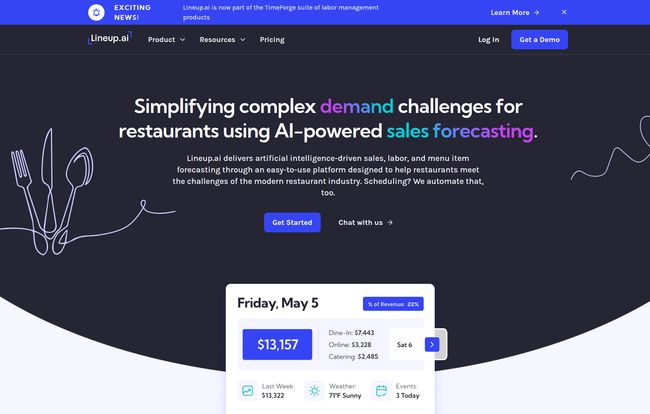
Visit Lineup.ai
It Even Predicts What You'll Sell
One of the coolest features I saw was the menu item forecasting. This is next-level stuff. The system can predict demand for specific items on your menu. Imagine knowing ahead of time that you’re likely to sell twice as many fish tacos and half as many steak dinners this Friday. This has huge implications for kitchen prep, reducing food waste, and managing inventory. No more 86'ing your most popular dish on a packed night. That alone is worth its weight in gold.
From Forecast to a Flawless Schedule
A great forecast is useless if you can't act on it. Lineup.ai bridges that gap by turning its predictions into optimized, automated schedules. Based on the expected sales volume, it calculates the exact number of staff—cooks, servers, hosts, bartenders—you need for every 15-minute interval of the day.
The result? You stop bleeding money on labor costs from overstaffing on slow days, and you stop burning out your team (and losing customers) by being understaffed during unexpected rushes. For employees, it means more predictable schedules and a less chaotic work environment, which I've found is a massive factor in reducing turnover. The platform even has a mobile app for staff to see their schedules and manage availability, which is pretty standard now but essential.
The Bottom Line: Does It Actually Save You Money?
Alright, let's talk numbers. This all sounds great, but does it impact profitability? I saw a pretty staggering testimonial on their site from the School of Rock franchisee, who said Lineup.ai "significantly dropped payroll for our 17 restaurants by about 2.5% points... an annualized $1.1-$1.2 million dollar savings."
Yeah, you read that right. Million. With an M.
Now, obviously, that's a large, multi-unit operation. But it shows the power of optimizing labor, which is almost always a restaurant's biggest controllable expense. Even for a single location, trimming 1-2% off your payroll can mean the difference between ending the year in the red or the black. The platform seems so confident in this that they even have an ROI calculator on their website to let you punch in your own numbers.
The Lineup.ai Pricing Structure Explained
The pricing seems refreshingly straightforward, which I appreciate. No need to sit through a two-hour demo just to get a price. It's broken down into two main tiers, charged per location, per month.
First, you have the Forecasts Only plan at $79/loc/month. This is perfect if you already have a scheduling system you and your team like, but you need the powerful AI forecasting engine to feed it better data. You get the AI-powered forecasts, a custom labor allowance budget tool, and the real-time sales dashboard.
Then there's the all-in-one package, Forecasts + Scheduling, for $149/loc/month. This includes everything in the first tier, plus the full scheduling suite—schedule builder, auto-scheduling based on the forecasts, employee management, and integrations. For most restaurants looking to streamline everything, this seems like the logical choice.
For what it promises, the price doesn't seem crazy, especially if it delivers even a fraction of the labor savings it advertises.
Is It All Perfect? A Few Things to Consider
No tool is a magic bullet, and it's important to be realistic. Based on my analysis, there are a few things to keep in mind.
First, the effectiveness of Lineup.ai is entirely dependent on the quality of your data. The old saying "garbage in, garbage out" definitely applies. You need a solid history of sales data from your POS for the AI to learn from. If your data is a mess, the forecasts will be too.
Second, this requires integration. It needs to talk to your POS and data management systems. Their site says they integrate with "top restaurant solutions," but you'll need to make sure it plays nice with whatever you're currently using. That initial setup might require some technical legwork.
Finally, there's likely a bit of a learning curve. This isn't just a simple scheduler; it’s a powerful analytics tool. To get the full value, you and your managers will need to invest some time in learning how to interpret the data and trust the system's recommendations over old habits.
My Final Take: Should Your Restaurant Use Lineup.ai?
In my opinion, Lineup.ai looks like a seriously powerful tool for a specific type of operator. If you're running a single cafe and know all your customers by name, this might be overkill. But if you're a data-driven owner, a multi-unit franchisee, or a restaurant group struggling to maintain consistency and control labor costs across locations, this could be a revelation.
The ability to automate one of the most time-consuming and high-stakes parts of management frees up your GMs to focus on what really matters: guest experience and team development. In today's tough market, using smart tech to work more efficiently isn't just a nice-to-have; its becoming a requirement for survival and growth.
Frequently Asked Questions about Lineup.ai
- How does Lineup.ai actually generate its forecasts?
- It pulls your historical sales data from your POS system and combines it with external, hyperlocal data like local events, weather, traffic, and more. Its AI models analyze these patterns to create a highly accurate sales forecast, right down to 15-minute intervals.
- Do I have to use their scheduling platform?
- Nope! They offer a "Forecasts Only" plan for $79/month per location. This is great if you're happy with your current scheduler but want to supercharge it with way better data.
- What kind of restaurants is this best for?
- While any restaurant could potentially benefit, it seems ideal for quick-service restaurants (QSRs), cafes, and especially multi-unit chains where small percentage improvements in labor costs add up to massive savings across the board.
- Is there a free trial period?
- The pricing page doesn't mention a specific free trial period. Typically for software like this, you'd book a demo with their sales team, who can likely set you up with a trial or a guided pilot program to see the results for yourself.
- How much historical data do I need for it to work well?
- While not explicitly stated, AI forecasting tools generally work best with at least a few months (ideally a year or more) of clean sales data. The more data the AI has to learn from, the more accurate its predictions will be.
The Future of Restaurant Operations
Look, the restaurant world is tough. Margins are tight, and good staff is hard to find and keep. Tools like Lineup.ai represent a shift away from just "gut-feel" management to a smarter, more data-informed approach. It might not solve every problem, but taking the chaos out of scheduling and labor costs is a pretty massive step in the right direction. If you're tired of the weekly spreadsheet struggle, this is definitely one to watch.
